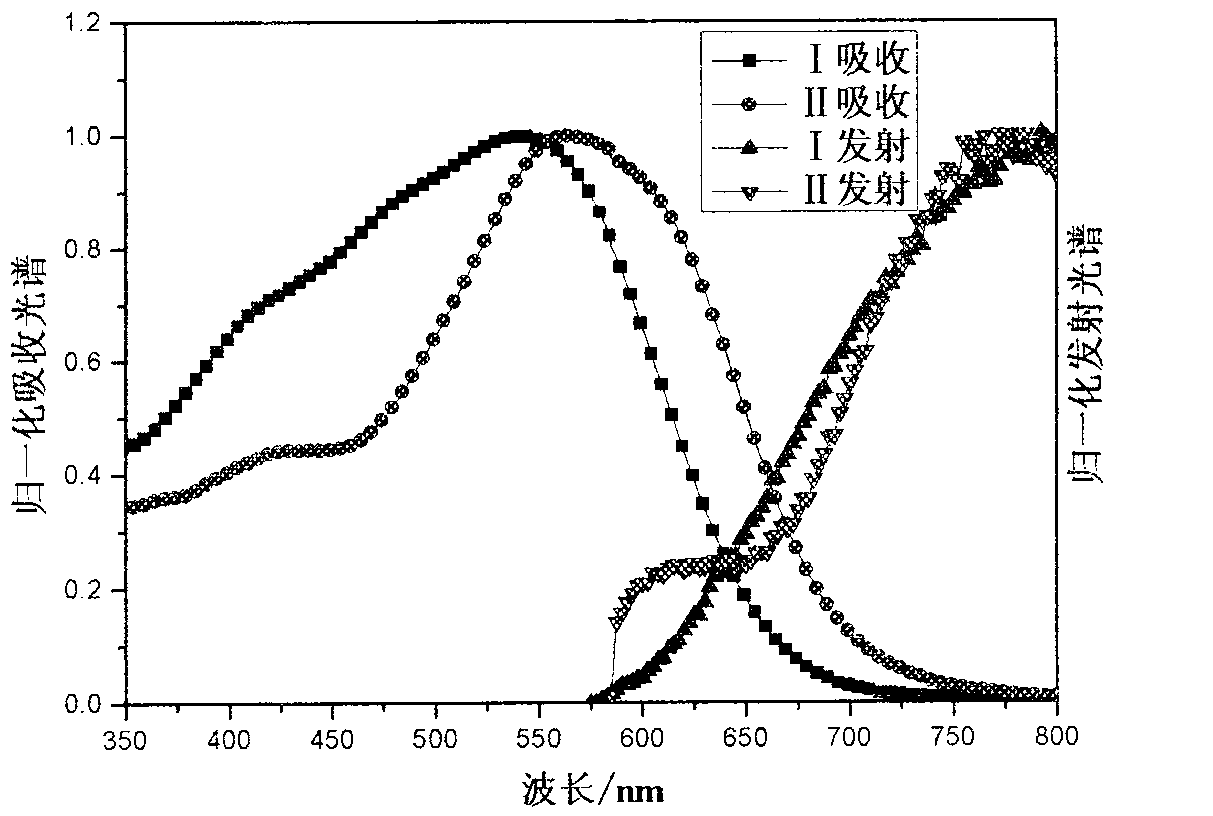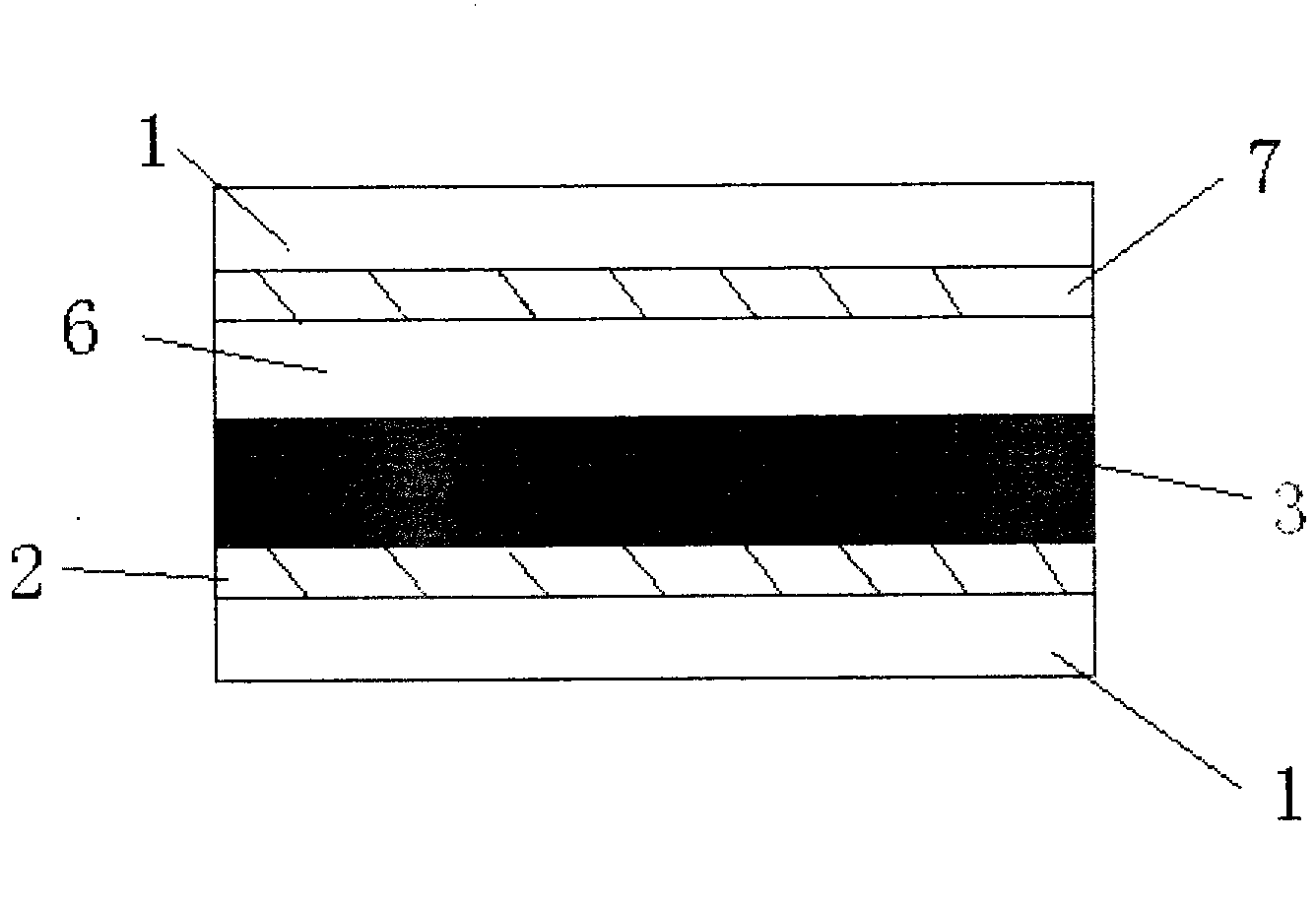Organic dye containing thiophen ethylene and dye sensitization solar cell prepared thereby
An organic dye, thienyl ethylene technology, applied in the field of dye-sensitized solar cells, can solve problems such as limiting practical applications
- Summary
- Abstract
- Description
- Claims
- Application Information
AI Technical Summary
Problems solved by technology
Method used
Image
Examples
Embodiment 1
[0052] Embodiment 1: the preparation of the organic dyestuff containing thienylethylene of chemical structural formula I provided by the present invention
[0053] The synthetic route is as follows:
[0054]
[0055] The specific synthesis method is:
[0056] Compound a 24g, POCl 3 9.8mL and 140mL of DMF were reacted at 90°C for 12h under the protection of argon, cooled, added 50mL of saturated sodium acetate solution and reacted for 0.5h, extracted with chloroform, washed with water, dried over anhydrous sodium sulfate, and the solvent was removed. The residue was obtained by column chromatography to obtain compound b ; NaBH 4 0.7g was dissolved in 40mL of 0.1M sodium hydroxide solution, slowly added to 18.6g of compound b in 130mL of ethanol solution, reacted at room temperature for 4 hours, diluted with 100mL of water, extracted with chloroform, washed with water, concentrated, and obtained compound c by column chromatography; c 12.9g with PPh 3 Dissolve 9.32 g of H...
Embodiment 2
[0058] Embodiment 2: the preparation of the organic dyestuff containing thienylethylene of chemical structural formula II provided by the invention
[0059] According to the same steps and conditions as in Example 1, 6,6'-bis(4,5-dihydro-6H-cyclopentadiene thienylidene)-2-formaldehyde was used instead of 5-(2-thienyl) - Thiophene-2-carboxaldehyde, the organic dye of chemical structure II is obtained.
[0060] The nuclear magnetic data of the organic dye of this chemical structural formula II: 1 H NMR (600MHz, DMSO-d 6 )δ: 0.88(t, 6H), 1.31(m, 8H), 1.40(m, 4H), 1.70(m, 4H), 3.01(br, 4H), 3.25(br, 4H), 3.94(t, 4H ), 6.69(d, 2H), 6.89(d, 4H), 6.93(d, 1H), 7.00(d, 4H), 7.09(s, 1H), 7.19(d, 1H), 7.36(d, 2H) , 7.80(s, 1H), 8.36(s, 1H), 13.46(s 1H).
Embodiment 3
[0061] Embodiment 3: the dye-sensitized solar cell prepared by the organic dye containing thienylethylene of the chemical structural formula I provided by the present invention
[0062] TiO with a particle size of 20nm 2 Colloid coating on fluorine-doped SnO 2 On conductive glass, nano-TiO is formed 2 The crystal film was baked at 400 °C for 12 hours to obtain TiO with a thickness of 7 μm 2 crystal film; the obtained TiO 2 Using the same method on the layer film, the particle size is 400nmTiO 2 , fired TiO with a thickness of 5 μm 2 Light scattering film; obtained TiO 2 Nanostructured bilayer membrane electrodes. Specific preparation of TiO 2 Nanocrystalline and TiO 2 For the method of nanostructured double-layer membrane electrode, see the article (Wang P. et al., Enhance the Performance of Dye-Sensitized SolarCells by Co-grafting Amphiphilic Sensitizer and Hexadecylmalonic Acidon TiO 2 Nanocrystals, J. Phys. Chem. B., 107, 2003, 14336).
[0063] Prepared TiO 2 Th...
PUM
 Login to View More
Login to View More Abstract
Description
Claims
Application Information
 Login to View More
Login to View More - R&D
- Intellectual Property
- Life Sciences
- Materials
- Tech Scout
- Unparalleled Data Quality
- Higher Quality Content
- 60% Fewer Hallucinations
Browse by: Latest US Patents, China's latest patents, Technical Efficacy Thesaurus, Application Domain, Technology Topic, Popular Technical Reports.
© 2025 PatSnap. All rights reserved.Legal|Privacy policy|Modern Slavery Act Transparency Statement|Sitemap|About US| Contact US: help@patsnap.com



